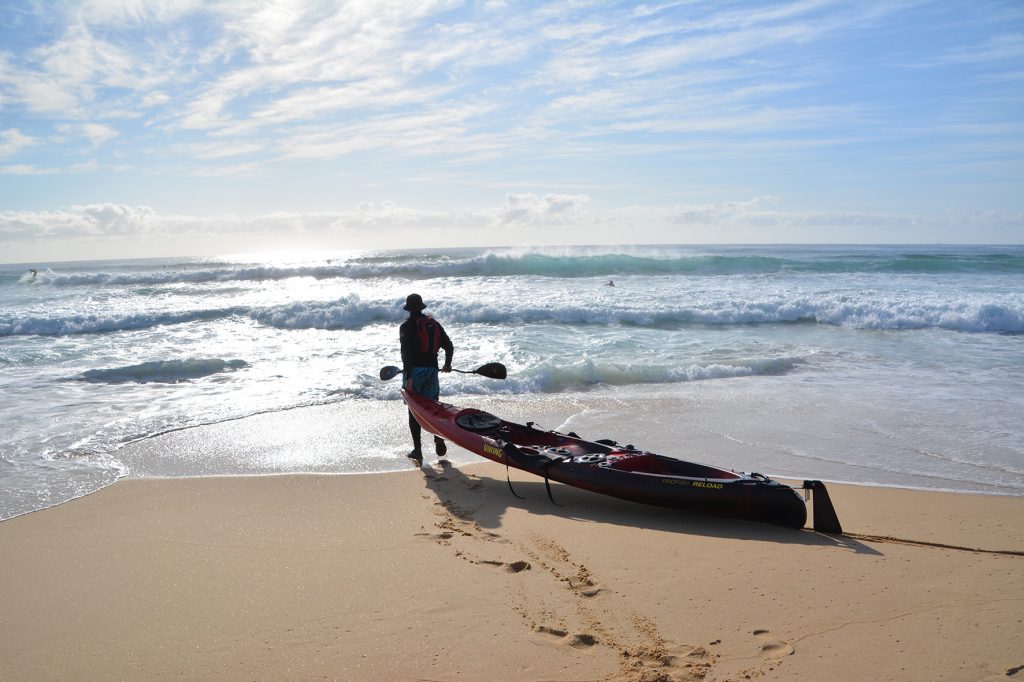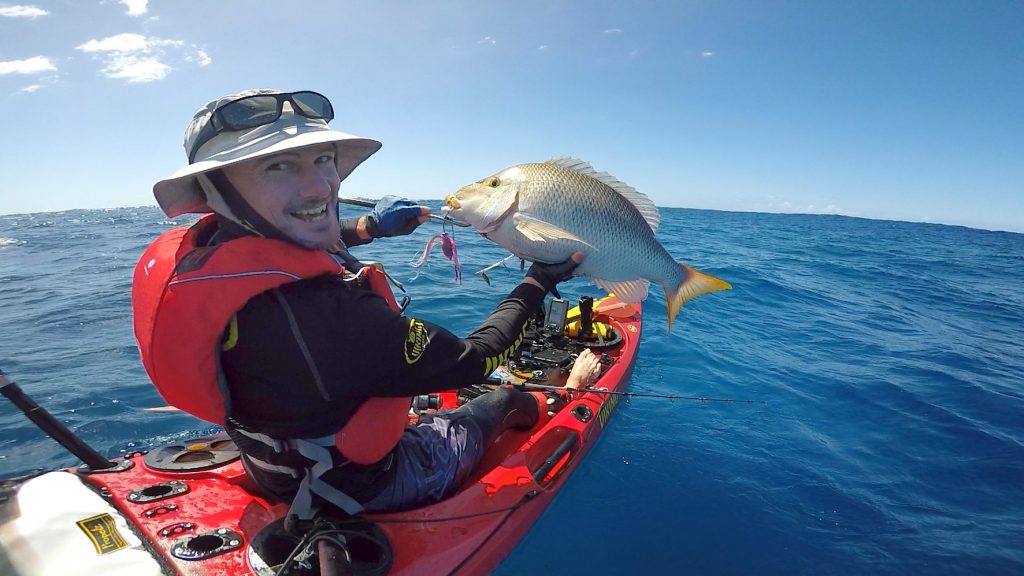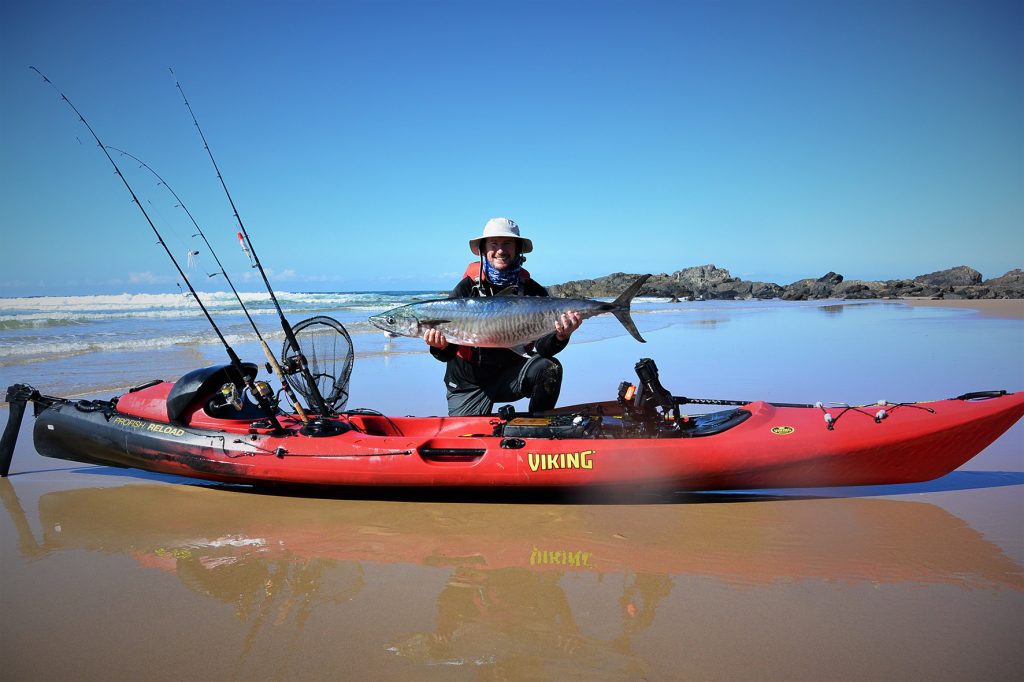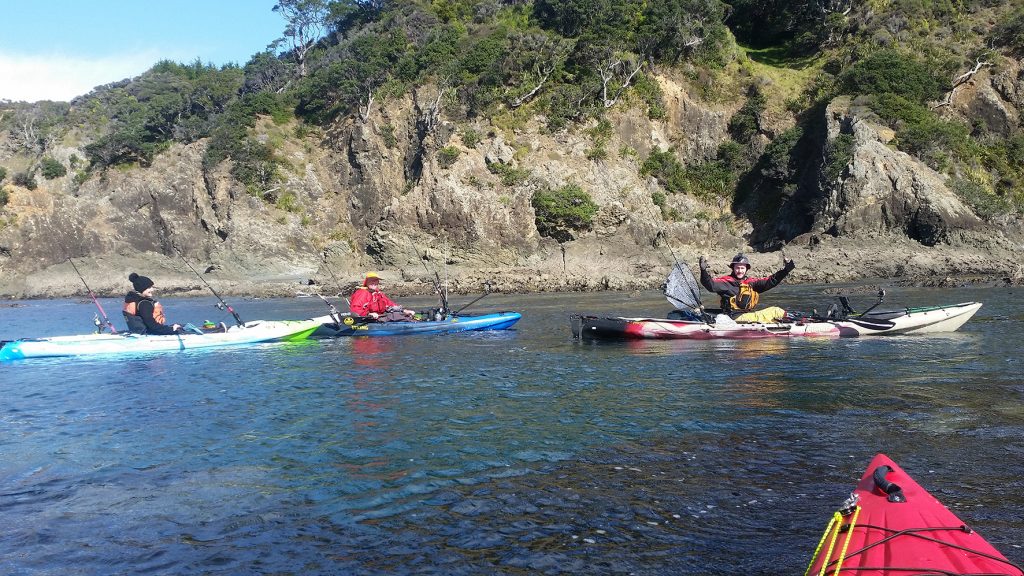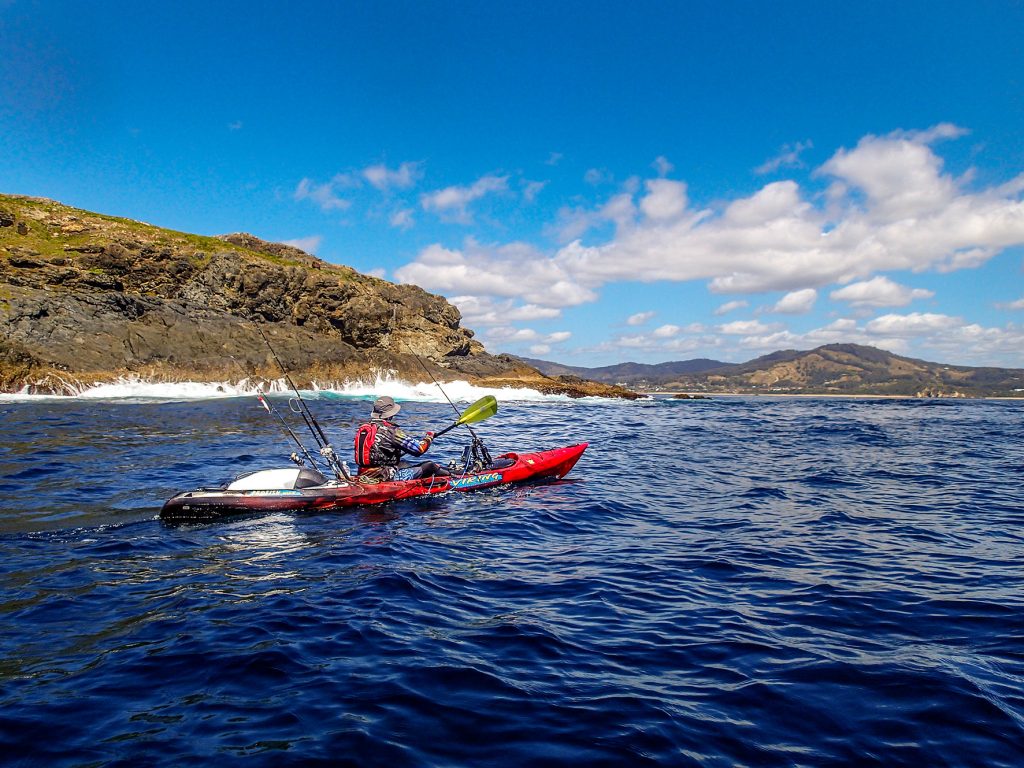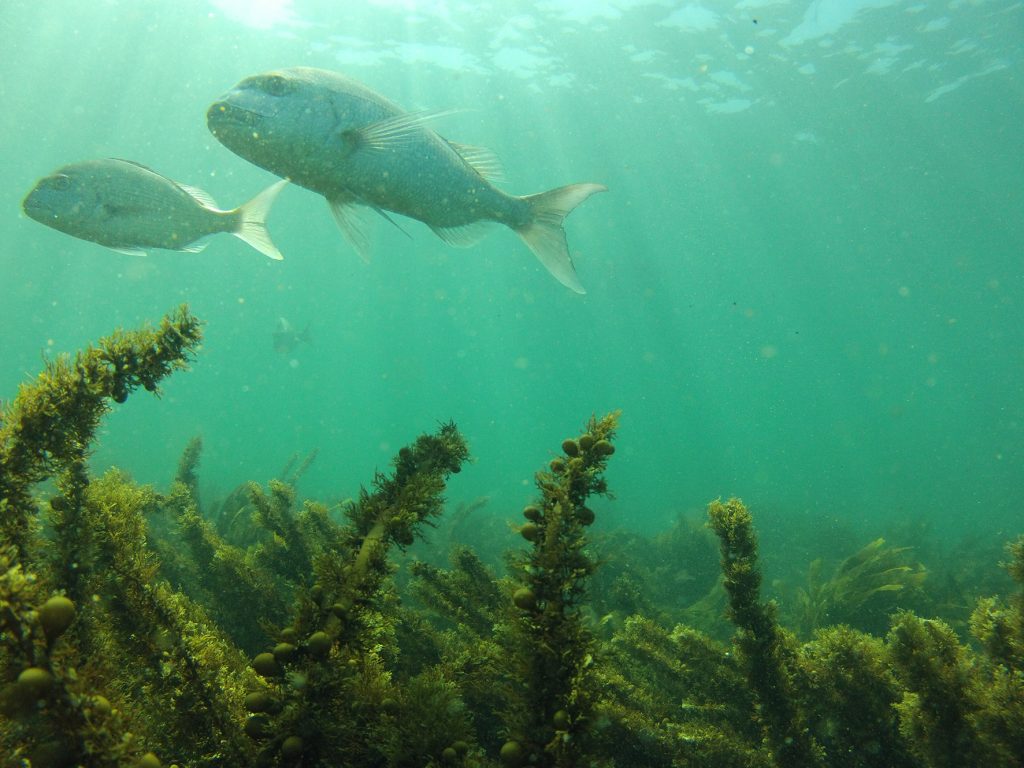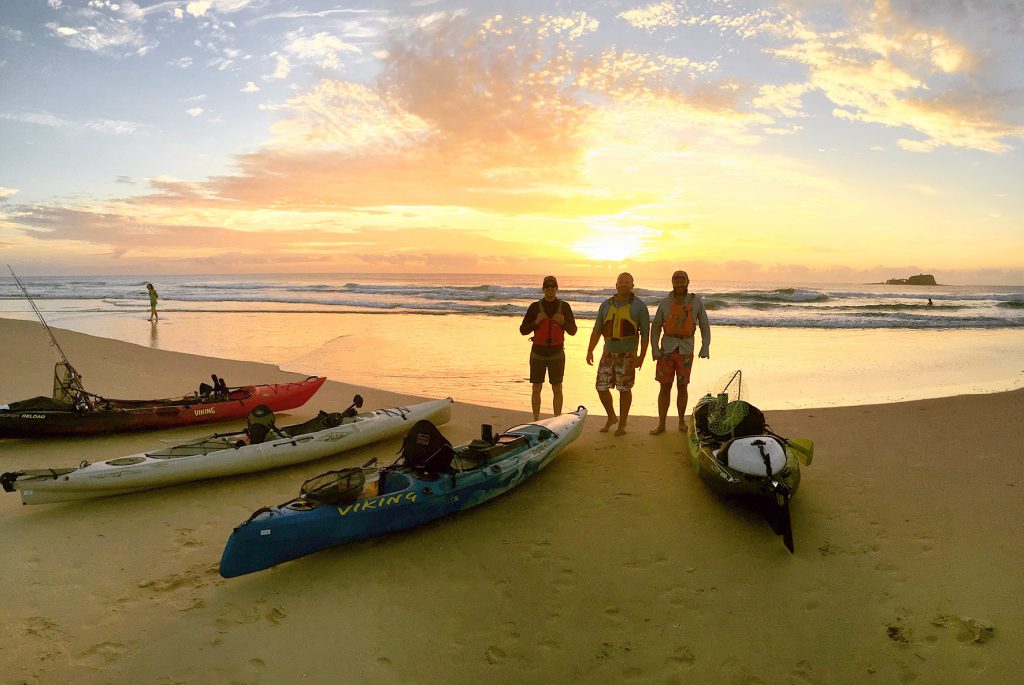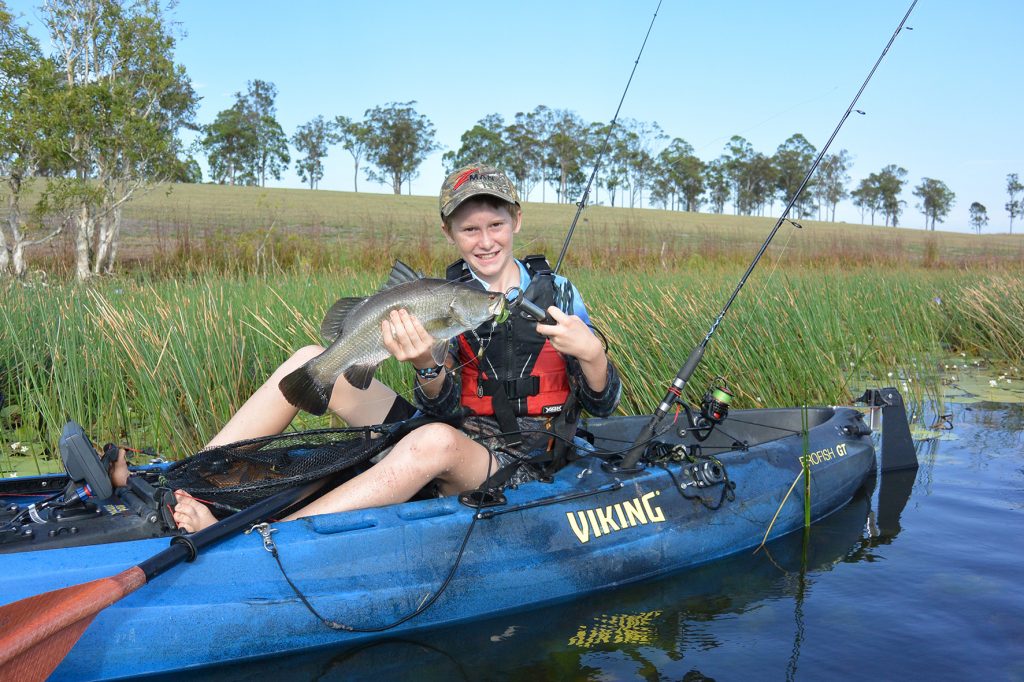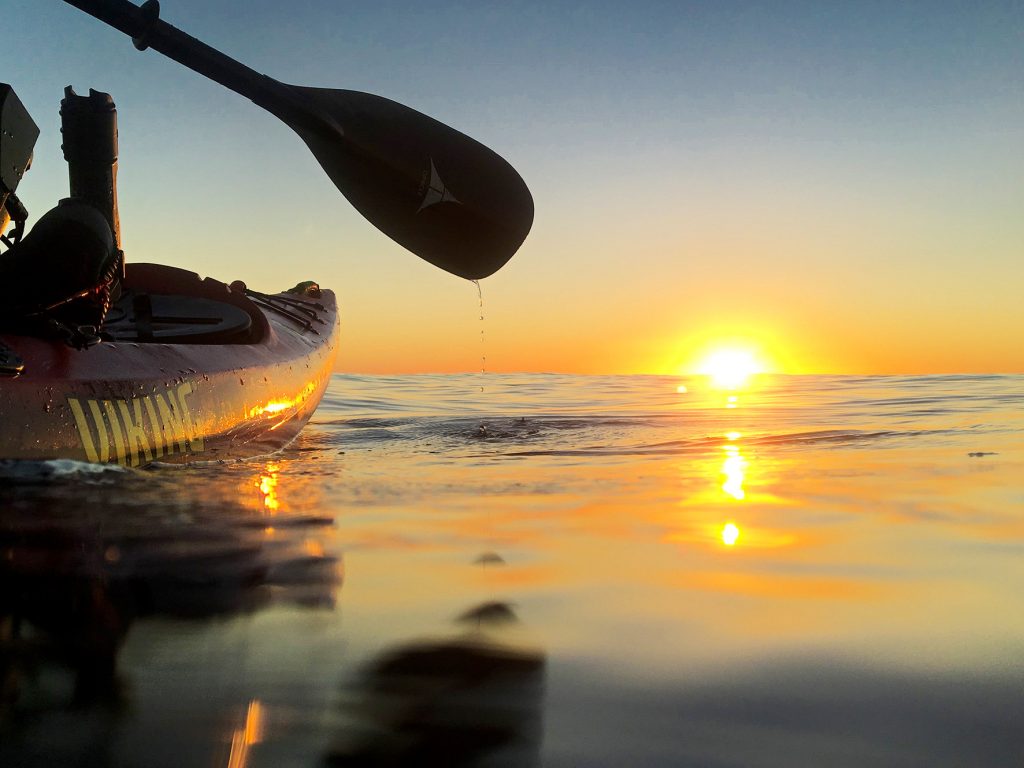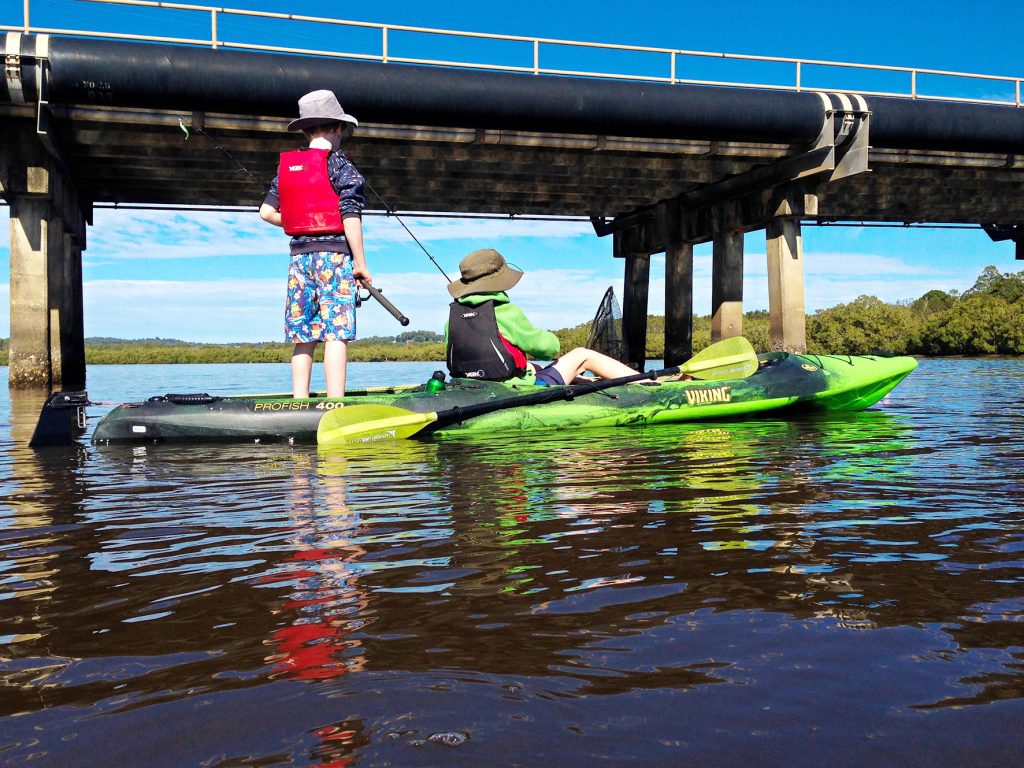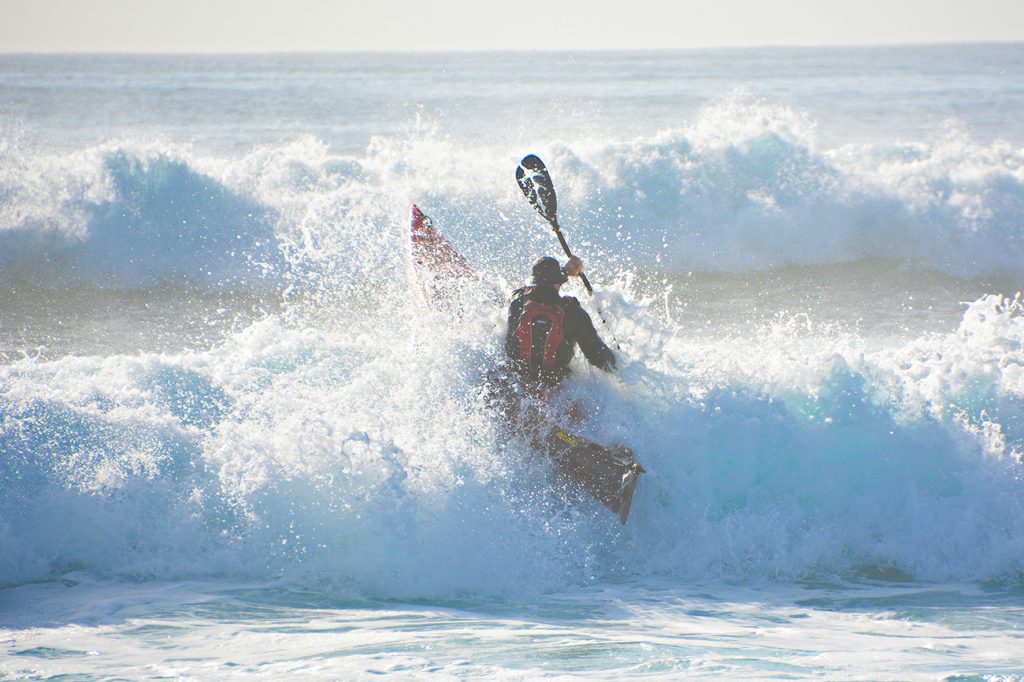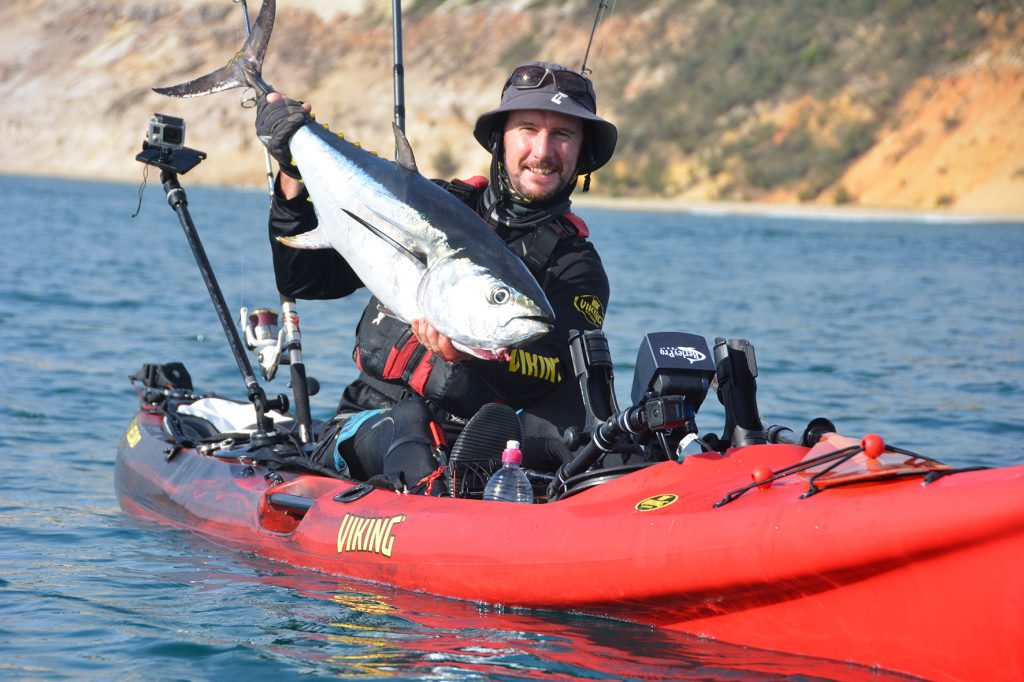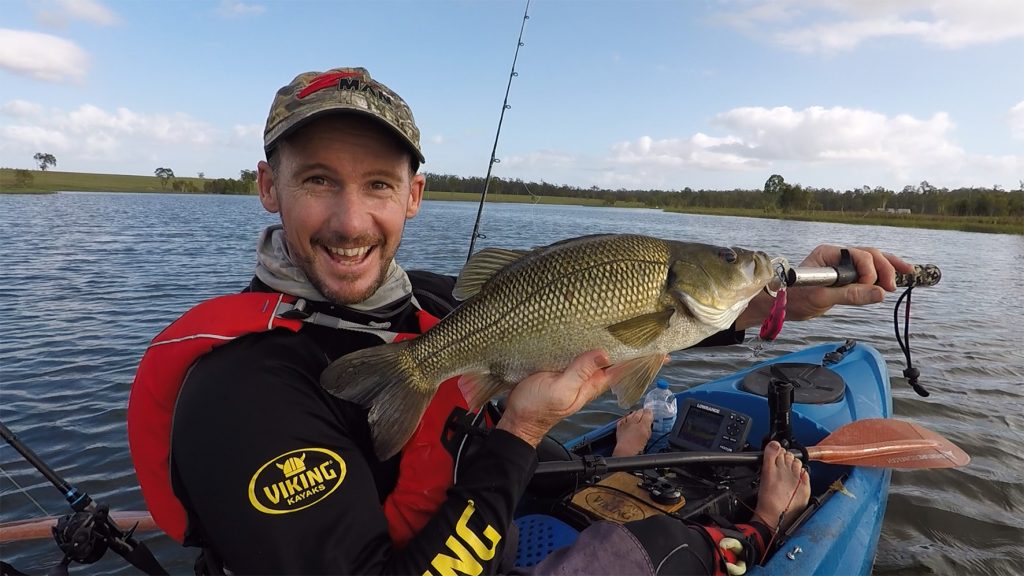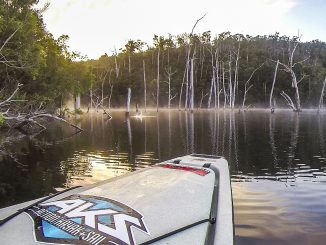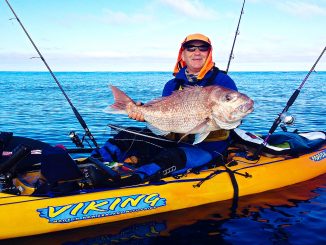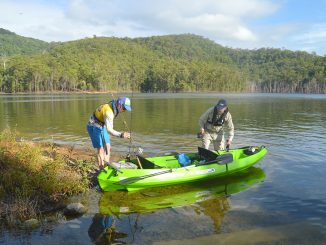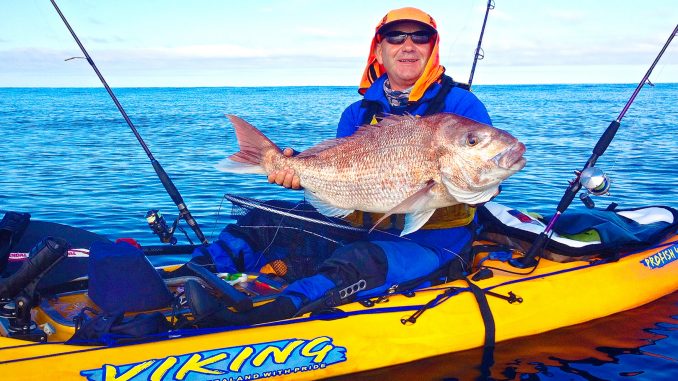
by Justin Wilmer •
I have spent many moons on the water kayak fishing, however recently I’ve only had a handful of offshore adventures. The bulk of my time has been spent in the rivers, creeks, estuaries and impoundments around Australia.
With the cooler weather firing up many offshore species, I thought this would be an ideal opportunity to gather some insights into the world of offshore kayak fishing from good friend, experienced paddler and accomplished offshore angler, Jason Milne.
Jason lives, breathes and works in kayaking, helping out loads of new and experienced kayak anglers at www.kayakandsup.com.au on Queensland’s Sunshine Coast and you can follow Jason’s adventures and even fire him through any questions via his Paddle Guy Facebook page. Let’s hear from Paddle Guy.
JW: You are recognised as one of Australia’s more proactive and social media active kayak anglers. Give us a bit of a run down on your paddling and kayak fishing background.
JM: I started my kayaking adventures as a sea kayak guide in the Abel Tasman National Park, on New Zealand’s South Island. At that time I hadn’t thought of fishing in the kayak, nor had many others. Back then the term ‘kayak fishing’ hadn’t been born.
Instead, a kayak was used to access premium rock fishing spots that were inaccessible by land or to drag a long line/set line out off the beach. Some years later I stopped into a local North Island kayak shop, where I was introduced to a sit on top kayak rigged by one of the leaders in this game, Stephen Tapp… and it just made sense.
My addiction to this awesome sport began, leading me to the fortunate position of working within the industry and having access to great products and an endless knowledge base. I have now been involved in kayak fishing, both in Australian and NZ waters, for around 11 years.
Through video and blogging I share useful knowledge and experiences from the water and it’s very rewarding when I hear from people that have been inspired to get into the sport through something I have shared. It’s equally rewarding meeting new like-minded people along the way. Seeing my kids’ faces when they hook up to a fish from the kayak is the best, too!
With my background out on the ocean, I have always preferred to head offshore and explore the ocean for pelagic and reef dwellers, with my home waters here on the Sunshine Coast certainly offering a variety of string-pulling options all year round.
That said, I have been bitten by the barra and bass bug after landing my first of each this year. The thrill of hooking up after so many casts is addictive and the new waterways I get to explore in search of these species in the freshwater are pretty spectacular. The options are almost endless, with the only limitation being not enough time to fish them all!
JW: You have spent a lot of years kayak fishing in both Australia and New Zealand. In what ways do you think the two countries differ in terms of paddling and kayak fishing, and what are a couple of highlights of each?
JM: They are both very different fisheries and yet many parts are similar from a kayak angler’s perspective. Starting with NZ, it has such changeable weather that you literally need to be prepared for four seasons in one day; 90% of the kayak fishing in NZ is done offshore, on relatively unprotected waters, requiring a higher level of preparation in terms of what the colder elements may throw at you.
This can be much the same for the southern state anglers in Australia fishing in the winter. This makes it a little less appealing for the everyday angler to want to take up the sport seriously, but many give it a go in fine weather conditions, so most coastal homes have at least one fishing kayak in the garage.
A highlight would be that there are some very fertile waters in close on most of the NZ coastline, as is highlighted on the show Big Angry Fish. They really do get big and they don’t need a lot of water to hide. This lends itself perfectly to kayak anglers who use the stealth to their advantage, sneaking up on 20lb+ snapper and monster kingfish.
Kayak fishing in Australia, however, offers endless opportunities and variety country-wide (I prefer to avoid croc territory in my yak, so my comfort boundary would be Bundaberg in Central Qld, unless it’s in the dams) with Northern NSW and Qld being fishable all year round in relative comfort. I imagine the same can be said for WA, but I have little experience there to comment.
A highlight for me here in Australia is the endless waterways and species on offer both offshore and inshore. There are so many more than in New Zealand waters and I have only scratched the surface with the few I have landed. It’s very exciting to know how many new species are out there to target and right now my freshwater bucket list fish would be a 1m+ Murray cod. For the salt water I am going all out this season to land my first coral trout of any size, with table-sized being preferred, as that’s high on the mouth-watering scale for me.
With so many protected water options available more people have access to this great sport, which can only be a good thing both for the industry and for encouraging more people to get outdoors and explore what’s on their doorsteps.
JW: What are a couple of your favourite species to target from the kayak and why?
JM: That’s a hard one with so many new species still to be caught, but I will go with these two.
On the sea, hearing 200m of braid screaming off your reel before you even get your hands on the rod and then getting towed around until the fish is tired would certainly have Spanish mackerel up there as my favourite right now. They can be a frustrating fish to search for in a kayak, out in the big blue, but when you get one they really are special and boy do they taste good!
On the fresh, though I’ve only landed a couple so far and am yet to join to metre plus club, barramundi would be my favourite to target, as much as for that feeling when you hook one as for the adventure shared with mates on the hunt for the elusive metre plus barra. The bond created from hours of planning and exploring amazing country in search of the ultimate barra boof also rates pretty high.
JW: You have an extensive offshore paddling and fishing history. What are a few tips and pieces of advice you would give kayak anglers around the following topics: kitting out your kayak for offshore fishing?
JM: Seek the advice of experienced offshore fishers and ask to join them for a few safe trips to learn the ropes. Sometimes these people can be found in specialised kayak stores and these are the ideal people to find. There is no video or magazine article that can replace the knowledge passed on from one to another in a real-time environment.
This is not a place to be trying to reinvent the wheel. Visit a few of the spots you’re thinking of launching at and talk to other kayak anglers you meet. You will grow a network from this and the offshore fishing community is full of anglers only too happy to help newcomers.
JW: Required skills and preparation?
JM: This will depend on many variables, but specifically talking offshore again, seek the advice of experience. There is a lot that can go wrong that can be avoided with some simple tips and advice, ideally from a specialised kayak fishing store – obviously it starts with the right kayak for the job and a Gumtree or eBay special might read like it’s suitable to take offshore, but do you really want to be 4km offshore being towed around by a tuna, only to find that it’s not quite right?
JW: Kayak fit-out?
JM: Starting out keeping it simple, you can add later. A true offshore fishing kayak will already come standard with key features that will benefit you on the water as these have been designed by offshore kayak anglers or at least designers that have been influenced by these market leaders.
But don’t take that for granted, as anyone who believes in what they are selling will let you try it before you buy, so make sure you do that if in doubt. Non-negotiable in design would be a kayak with longer hull, low set seat position, facility for a rudder and watertight compartments.
Essentially these are usually better sea-going craft; they’re stable and easier for you to paddle offshore. Leash anything on the cockpit. A PFD (personal floatation device) is non-negotiable and a VHF radio is highly recommended. A fish finder is extremely useful when searching such a vast waterway with Navionics or a marine maps app on your phone, giving you GPS marks and reefs.
JW: Beach/surf launching?
JM: There is a lot to this and I regularly run free surf sessions with kayak anglers, helping them to gain confidence. I will just touch on a few key pointers, but highly recommend practice in the surf with no gear before attempting to take a fully loaded fishing yak out. Again, the kayak you choose needs to be fit for purpose. A longer, faster hull with good cockpit drainage and low seat position for greater stability is ideal, along with plenty of below-deck storage and watertight space to stow as much as possible away.
Less is best to avoid gear damage or loss and to reduce weight. If you don’t really need to take it, leave it behind. The lighter and less cluttered the kayak, the better off you will be in the surf. A strong paddle, preferably glass or carbon, is important – this is not the place you need a paddle breaking.
When looking for a paddle, ensure you ask for something that’s good for the surf as there are loads of good options, but remember you get what you pay for. This can be an unforgiving environment for paddles, especially when trying to propel and control a heavy fishing kayak in surf. It’s also very important to go with a mate, watch out for each other and stay together.
JW: Landing and handling fish?
JM: When pelagic fishing I use either a gaff or have a glove on the hand used to tail grab a fish (making sure the fish is not green when you try this though, as gear gets lost and hooks can get stuck where they are not intended). Rubber nets are ideal for other fish, which I keep secured in a rod holder behind me until needed.
JW: Describe your kayak selection and basic fit-out for us briefly.
JM: My go-to offshore fishing kayak is the Viking Kayaks Profish Reload. At 4.5m, with a hull and cockpit designed for offshore fishing, this kayak is yet to disappoint. It has all the key features I have previously suggested you look for in a capable offshore kayak. Tackle storage and fish storage options are plenty and it can be a lot of fun on a wave. The large cockpit scupper drains water quickly after a wave dumps in.
JW: What safety gear do you carry offshore?
JM: A PFD absolutely and my go-to is the Yak Adventure equipment. This company has strong roots with white water and sea kayaking, so they are in the business of making PFDs that are not only safe, but designed to remain comfortable over extended periods on the water. A VHF is non-negotiable for me, with a waterproof, floating model attached to the PFD, not stashed in a hatch where it’s no good to you if you’ve been separated from the kayak.
This is not only for emergencies, but also to stay in touch with your mates on the water. It’s very easy to lose sight of one another and mobile phones in dry cases are not reliable. A spare paddle is a good idea on big trips, just in case, more so if someone else breaks a paddle. The first time I had to tow someone back for 5km was the last! I take a good set of pliers and they need to be able to cut hooks that might get stuck – that’s what I mean by good.
A spare sharp knife, secured to your leg for cutting lines. Sunblock and spare water in summer months for me are safety essentials. That’s just a few, and an EPIRB is recommended if going out wide. As with any trip, make sure you tell someone where you’re going and when you expect to be back.
JW: What can people expect to see if they follow Paddle Guy on social media?
JM: My goal with Paddle Guy has always been to pass on what others have shared with me, through content that either helps or inspires others to get out and have adventures on the water. Along with sharing useful tips and great products, I will continue to share my adventures on the water and am always happy for anyone to tag along for a trip… maybe you can help me get that metre plus barra or the tasty coral trout I am after this season.
Experienced kayak anglers, like Jason, are a great resource for those new to the sport and also a source of new information and ideas for those more experienced. The kayak community is growing steadily and we can all help by sharing information and ideas with other paddlers.
As the pool of reliable and accurate information grows we can rapidly increase our knowledge and skill set, making our adventures safer, more comfortable, more productive and more enjoyable. Thanks to Jason for taking the time to answer these questions and if you would like to follow his adventures or ask a question of your own, give Paddle Guy a like and follow on Facebook.

